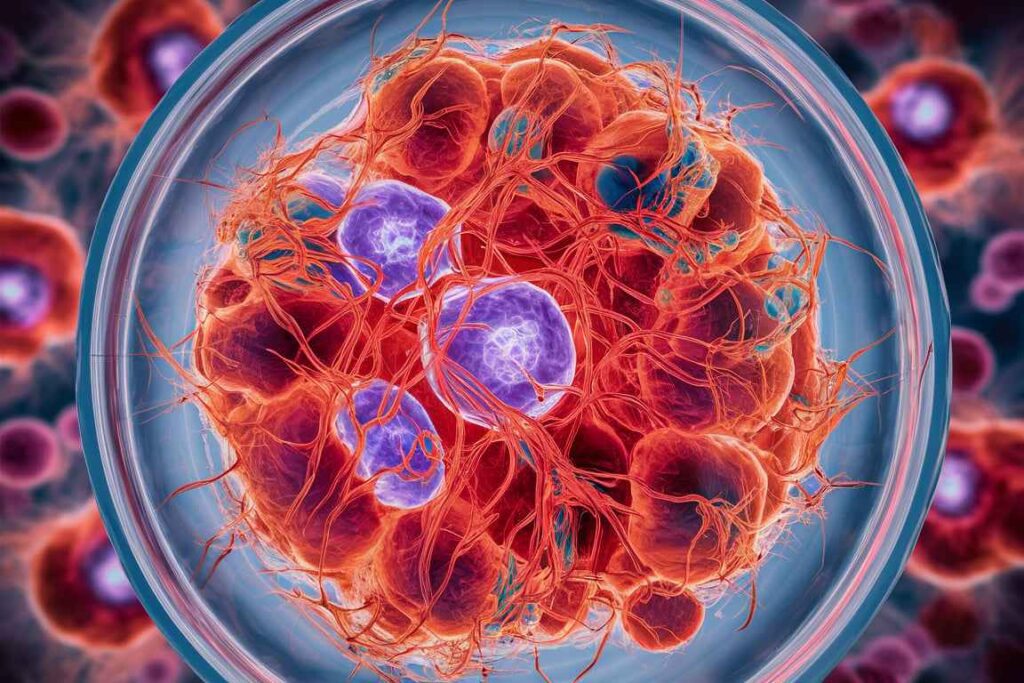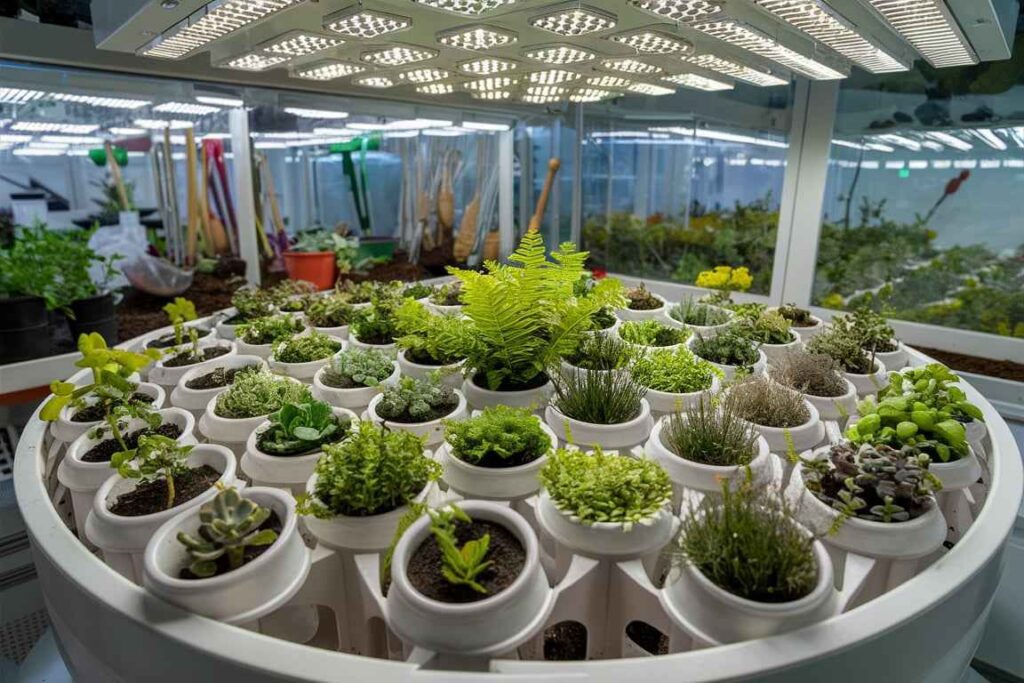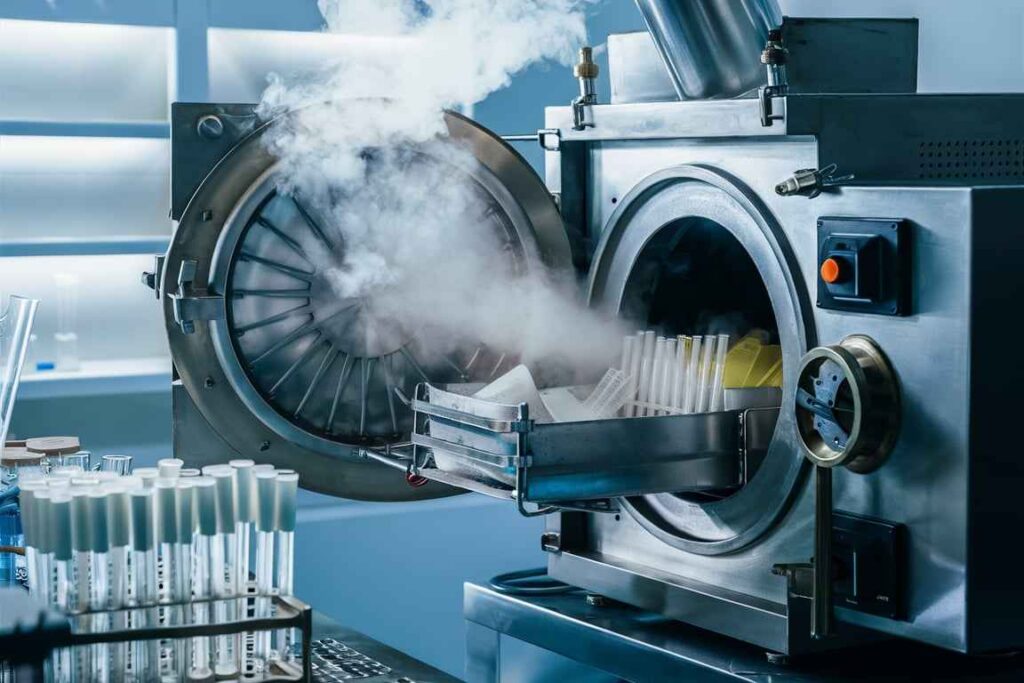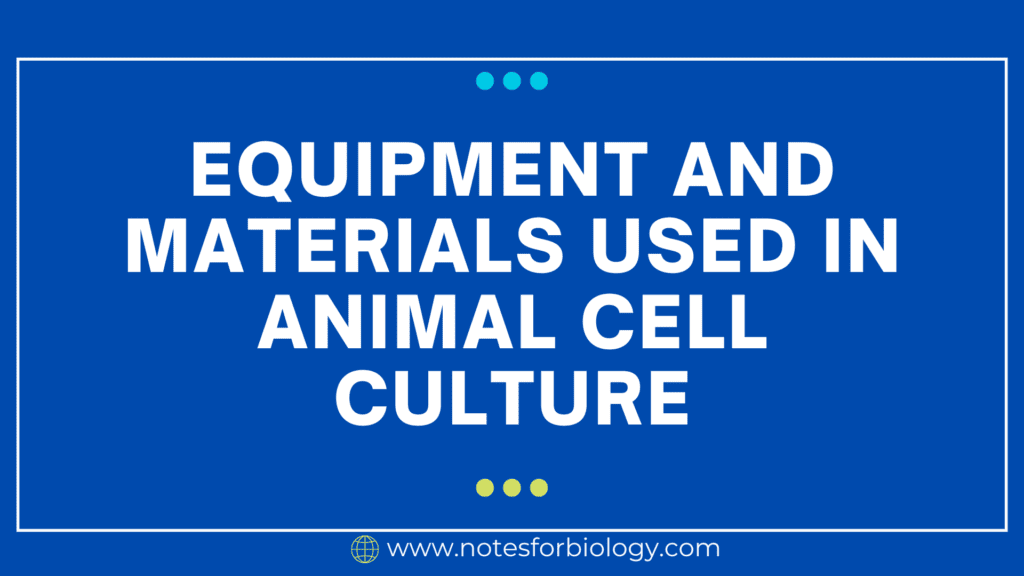Animal cell culture involves growing animal cells under controlled conditions, typically outside their natural environment. This process requires a range of equipment and materials to ensure the cells are maintained in a sterile, nutrient-rich environment. Below is a detailed explanation of the essential equipment and materials used in animal cell culture:

Table of Contents
Equipment used for Animal cell culture
1. Biological Safety Cabinet (BSC)
- Purpose: Creates a sterile environment to prevent contamination during cell culture procedures.
Types:
- Class I: Protects the user and the environment, but not the sample.
- Class II protects the user, the environment, and the sample. The most typical application is in cell culture.
- Class III: Offers the maximum level of protection and is completely enclosed.
- Features include HEPA filtration, laminar airflow, and UV sterilization.
2. CO 2 Incubator

Purpose: Provides an optimum environment for cell growth that mimics in vivo settings.
Features:
- Temperature control is usually set to 37°C for mammalian cells.
- CO2 Control: Typically, 5% CO2 is used to keep the culture medium’s pH balanced.
- Humidity Control: Maintain high humidity to prevent medium evaporation.
3. Inverted microscope
Purpose: To observe cell shape, growth, and behavior in culture containers.
Features:
- Inverted design allows for observing cells from below, making it perfect for flasks or dishes.
- Phase Contrast and Fluorescence: Improves visibility of cells that have not been stained and allows for the observation of fluorescently labeled cells.
4. Centrifuge
Purpose: To separate cells from the culture media and other components.
Types:
- Tabletop Centrifuges are commonly employed for tiny quantities.
- Refrigerated centrifuges are used to prevent heat buildup during centrifugation.
5. Autoclave

- The purpose is to sterilize culture material, equipment, and consumables to prevent contamination.
- The process involves using high-pressure saturated steam at 121°C for around 15-20 minutes.
6. Water Bath
- Purpose: Heats culture medium and reagents to the specified temperature.
- Features: Temperature control, often set to 37°C for warming media.
7. Pipettes & Pipette Aids
Purpose: To handle and transport liquids precisely.
Types:
- Micropipettes are suitable for small volumes (1-1000 µL).
- Serological pipettes are for greater volumes (1-50 mL).
- Pipette Aids: Helps with the use of serological pipettes.
8. Hemocytometers or automated cell counters
- The purpose is to count cells and measure their vitality.
- A hemocytometer is a device that counts cells manually using a customized slide.
- Automated cell counters provide faster and more accurate cell counts.
9. Refrigerator and freezer (-20°C to -80°C)
- Purpose: Holds culture media, reagents, and cell samples.
- Features: -20°C for short-term storage and -80°C for long-term storage.
10. Vacuum Pump with Aspirator
- Purpose: Removes media and waste from culture vessels.
- Features include sterile tubing and collection bottles to prevent contamination.
Materials used in Animal cell culture
1. Cell Culture Media
- Purpose: Supplies vital nutrients, growth factors, and hormones required for cell survival and proliferation.
- Types include Dulbecco’s Modified Eagle Medium (DMEM), RPMI-1640, and Minimum Essential Medium (MEM).
- Components include amino acids, vitamins, minerals, carbohydrates, and, in rare cases, antibiotics.
2. Fetal bovine serum (FBS)
- Purpose: To supplement culture media with growth factors, hormones, and attachment factors.
- In culture media, a concentration of 5-20% v/v is commonly utilized.
3. Antibiotics and antimycotics
- Prevent bacterial and fungal contamination.
- Common types include penicillin-streptomycin (Pen-Strep) and amphotericin B.
4. Trypsin-EDTA
- Enzymatic solution is used to remove adherent cells from culture containers.
- Function: Trypsin degrades proteins, whereas EDTA chelates calcium and magnesium ions.
5. Phosphate Buffered Saline (PBS)
- The purpose of washing cells is to eliminate serum and other contaminants.
- Features: Isotonic and non-toxic to cell
Additional consumables and reagents
1. Fluorescent Dye and Stains
- Purpose: For cell viability, differentiation, and other tests.
- Examples include Trypan blue (for viability), DAPI (nuclear stain), and Calcein-AM (viable cell stain).
2. Growth Factors and Cytokines
- Purpose: Specific proteins are added to culture conditions to promote cell growth and differentiation.
- Examples include Epidermal Growth Factor (EGF) and Fibroblast Growth Factor (FGF).
3. Plasticware
- Sterile, disposable products are employed in a variety of cell culture methods.
- Examples include pipette tips, conical tubes, and petri plates.
Quality Control and Monitoring
Mycoplasma Detection Kits
- Purpose: Ensures that cultures are clear of mycoplasma infection, which might affect experimental results.
- Methods: PCR-based, DNA staining, and ELISA.
pH Indicators and Monitors
- Purpose: Maintains appropriate pH levels in cultures.
- Examples include phenol red (a pH indicator in medium) and pH meters.
Frequently Asked Question
What are the equipment of used in animal cell culture?
The equipment of used in animal cell culture are
1. Biological Safety Cabinet (BSC)
2. CO 2 Incubator
3. Inverted microscope
4. Centrifuge
5. Autoclave
What are materials of used in animal cell culture?
The materials of used in animal cell culture are
1. Fluorescent Dye and Stains
2. Growth Factors and Cytokines
3. Plasticware
Related Article

